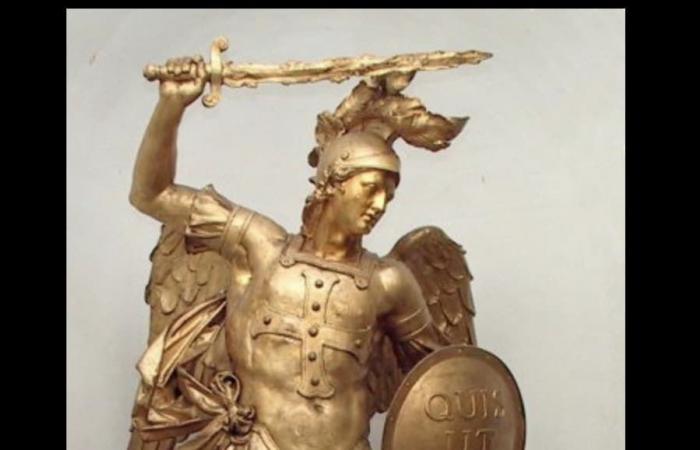In this section we invite you to discover the history of the Saints Bretons. Breton saints designate Breton personalities venerated for the exemplary character of their lives from a Christian point of view. Few of them were recognized as saints by the canonization procedure of the Catholic Church (established several centuries after their death), but were designated by the people, their very existence not always being historically attested. Most of the vitae of Breton saints which have reached us date in fact from the 9th and 10th centuries or were rewritten in the context of the Gregorian reform which sometimes induced clerics to reshape the hagiographic documents, resulting from oral traditions transmitted both in the old popular background than in the scholarly environment, in their interest (legitimation of the episcopal figure, of the merits of a reform of a monastic community). The development of the cult of these saints developed in the late Middle Ages when several families of the Breton aristocracy appropriated the hagiographical legends by justifying, through genealogical arguments, the particular protection of a saint or his adoption as a substitute ancestor. in their lineages.
Current historians still have great difficulty distinguishing between imagination and reality. The historicity of episodes in the lives of these saints often remains doubtful because these episodes are found in hagiography just as they appear in customs or folklore. The very structure of the vitae narrative is found in other Lives of Saints whose authors generally take up “literary conventions of a biblical model which shaped their modes of thought and expression”.
In 2022, around 170 Breton saints are represented, each by a statue, at the Vallée des Saints, in Carnoët.
September 29 is Saint Michael’s Day
Breton form for Michel which means in Hebrew “who is like God”.
Thus Saint Michael shines on men, especially from the top of Mont-Saint-Michel. Patron of the Celts, he is honored in Locmiquélic and Locmiquel.
The history of Mont Saint-Michel begins with a legend:
Saint-Michel was one day called to fight against the demon who, to fight, had transformed himself into a formidable dragon. The battle began on Mount Dol in Brittany. Satan, assisted by his evil hordes, fought fiercely. The fight with an uncertain outcome continued in the sky for several days before the outcome took place some place away on Mount Tombe (Mont Saint-Michel).
Aubert, bishop of Avranches, who witnessed the combat; receives in a dream the order of Saint-Michel to build him a place of devotion at the place where he defeated the Evil One. The poor bishop, fearing madness, does not dare to do anything and decides to wait. The archangel appears a second time but Aubert still doubts. At the third manifestation, Aubert can no longer doubt. Saint-Michel, furious, leaves undeniable proof in his skull: a circular hole. But the bishop must not suffer too much because he will not die until years later. Today his skull is preserved in the basilica of Avranches.
History
Is the legend of the skull true or false? No one knows. Whatever the case, history reveals that indeed, in 708, Aubert had a small oratory in the shape of a cave built that could accommodate around a hundred people and that this construction marks the beginning of what will be Mont Saint-Michel.
Saint Michael is throughout Christianity the warrior archangel who subdues the rebels against God. Leader of the celestial militia, he is the defender of the Church. It is he who fights against the rebel angels and against the Dragon of the Apocalypse. Part of the legend of the founding of Mont Saint-Michel is a direct transposition of biblical texts.
Saint John tells us in fact: “And there was war in heaven: Michael and his angels fought against the dragon. And the dragon and his angels fought, But they were not the strongest, and their place was not found in heaven. And the great dragon was cast out, that serpent of old, called the devil and Satan, who deceives the whole earth, he was cast out to the earth, and his angels were cast out with him.”
The cult of Saint-Michel first developed in the East. It appears early in Byzantium and Alexandria. In the West, it developed from the 5th and 6th centuries, first in Italy and France, then in Germany before spreading throughout the Christian world.
Supplements
Saint-Michel is very often represented as a knight and armor, armed with a lance (sometimes a fiery sword) and a shield decorated with a cross. Celestial protector, he defeats the Demon (usually represented in the form of a Dragon). He is generally on foot while Saint George fights the Dragon on horseback, which allows them to be distinguished. But above all, Saint Michael is winged while George is not.
Saint Michael is invoked in the West especially for obtaining military victories. In the Middle Ages, the archangel was also depicted weighing the souls of the dead because he was believed capable of saving souls from hell.
Photo credit: DR
[cc] Breizh-info.com, 2022, dispatches free to copy and distribute subject to mention and link to the original source






